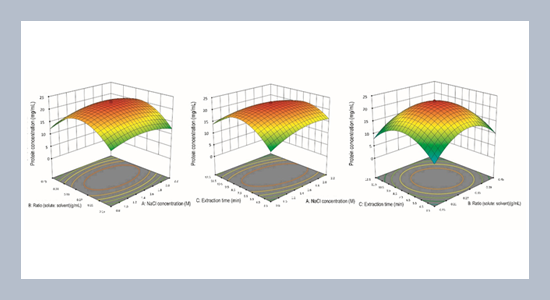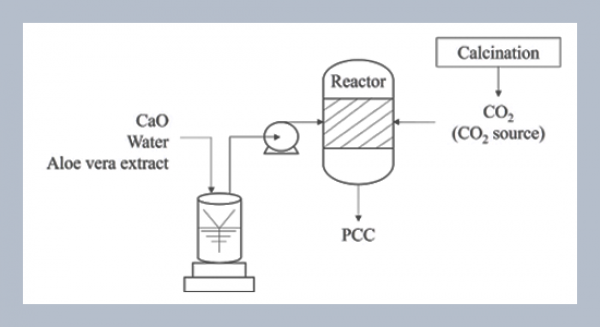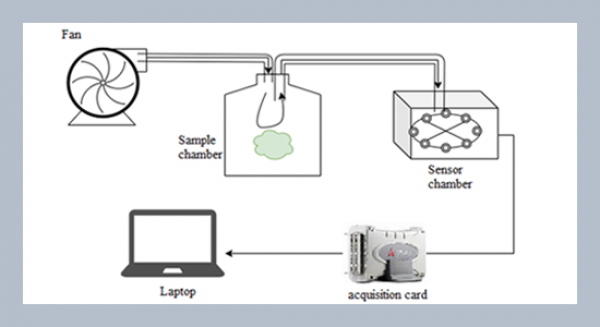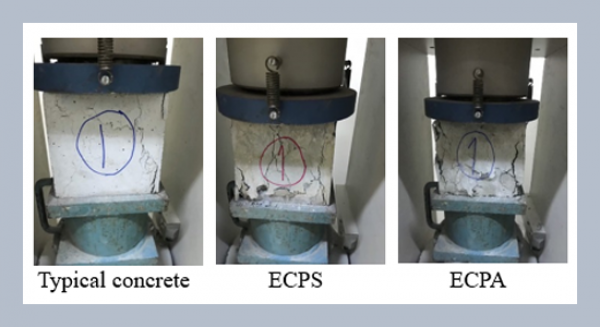REFERENCES
- Al-Ani, B.M., Owaid, M.N., Al-Saeedi, S.S.S. 2018. Fungal interaction between Trichoderma spp. and Pleurotus ostreatus on the enriched solid media with Licorice glycyrrhiza glabra root extract. Acta Ecologica Sinica, 38, 268–273.
- Azmir, J., Zaidul, I.S.M., Rahman, M.M., Sharif, K.M., Mohamed, A., Sahena, F., Jahurul, M.H.A., Ghafoor, K., Norulaini, N.N.N., Omar, A.K.M. 2019. Techniques for extraction of bioactive compounds from plant materials: A review. Journal of Food Engineering, 117, 426–436.
- Bellettini, M.B., Fiorda, F.A., Maives, H.A., Teixeira, G.L., Avila, S., Hornung, P.S., Junior, A.M., Ribani, R.H. 2019. Factors affecting mushroom Pleurotus spp. Saudi Journal of Biological Sciences, 26, 633–646.
- Bhatta, U.K. 2021. Alternative management approaches of citrus diseases caused by Penicillium digitatum (green mold) and Penicillium italicum (blue mold). Frontier of Plant Science, 12, 833328.
- Chakraborty, S., Uppaluri, R., Das, C. 2020. Optimization of ultrasound-assisted extraction (UAE) process for the recovery of bioactive compounds from bitter gourd using response surface methodology (RSM). Food and Bioproduct Process, 120, 114–122.
- Chemat, F., Rombaut, N., Sicaire, A-G., Meullemiestre, A., Fabiano-Tixier, A-S., Abert-Vian, M. 2017. Ultrasound-assisted extraction of food and natural products. Mechanisms, techniques, combinations, protocols and applications. Ultrasonics Sonochemistry, 34, 540–560.
- Chen, Y.J., Zhu, J-Q., Fu, X-Q., Su, T., Li, T., Guo, H., Zhu, P-L., Lee, S. K-W., Yu, H., Tse, A. K-W., Yu, Z-L. 2019. Ribosome-inactivating protein α-momorcharin derived from the edible plant Momordica charantia induces inflammatory responses by activating the NF-Kappa B and JNK pathways. Toxins, 11, 694.
- Citores, L., Ferreras, J.M., 2023. Biological activities of ribosome-inactivating proteins. Toxins, 15, 35.
- Citores, L., Velletta, M., Singh, V.P., Pedone, P.V., Iglesias, R., Ferreras, J.M., Chambery, A., Russo, R. 2022. Deciphering molecular determinants underlying Penicillium digitatum’s response to biological and chemical antifungal agents by Tandem Mass Tag (TMT)-Based High-Resolution LC-MS/MS. International Journal of Molecular Science, 23, 680.
- Drevelegka, I., Goula, A.M. 2020. Recovery of grape pomace phenolic compounds through optimized extraction and adsorption processes. Chemical Engineering & Processing Process Intensification, 149, 107845.
- El Sobky, M.A., Fahmi, A.I., Eissa, R.A., El-Zanaty, A.M. 2019. Genetic characterization of Trichoderma spp. isolated from different locations of Menoufia, Egypt and assessment of their antagonistic ability. Journal of Microbiol & Biochemical Technology, 11, 409.
- Elsherbiny, E.A., Dawood, D.H., Safwat, N.A. 2021. Antifungal action and induction of resistance by β-aminobutyric acid against Penicillium digitatum to control green mold in orange fruit. Pesticide Biochemistry and Physiology, 171, 104721.
- Gadalkar, S.M., Rathod, V.K. 2020. Extraction of watermelon seed proteins with enhanced functional properties using ultrasound. Preparative Biochemistry & Biotechnology, 50, 133–140.
- Gullón, P., Gullon, B., Romani, A., Rocchetti, G., Lorenzo, J.M. 2020. Smart advanced solvents for bioactive compounds recovery from agri-food by-products: A review. Trends in Food Science & Technology, 101, 182–197.
- Horax, R., Hettiarachchy, N., Kannan, A., Chen, P. 2011. Protein extraction optimisation, characterisation, and functionalities of protein isolate from bitter melon (Momordica charantia) seed. Food Chemistry, 124, 545–550.
- Hu, H., Fan, T., Zhao, X., Zhang, X., Sun, Y., Liu, H. 2017. Influence of pH and salt concentration on functional properties of walnut protein from different extraction methods. Journal of Food & Science Technology, 54, 2833.
- Huang, M., Hull, C.M. 2017. Sporulation: how to survive on planet Earth (and beyond). Current Genetics, 63, 831–838.
- Katoch, M., Singh, D., Kapoor, K.K., Vishwakarma, R.A. 2019. Trichoderma lixii (IIM-B4), an endophyte of Bacopa monnieri L. producing peptaibols. BMC Microbiology, 19, 98.
- Kaushik, B., Sharma, J., Yadav, K., Kumar, P., Shourie, A. 2021. Phytochemical properties and pharmacological role of plants: secondary metabolites. Biosciences Biotechnology Research Asia, 18, 23–35.
- Kumar, G., Singh, A., Pandey, S., Singh, J., Chauchan, S.S., Srivastava, M. 2020. Morphomolecular identification of Trichoderma sp. and their mycoparasitic activity against soil born pathogens. International Journal of Bio-resource and Stress Management, 11, 613–627.
- Lee, J.J., Yoon, K.Y. 2021. Optimization of ultrasound-assisted extraction of phenolic compounds from bitter melon (Momordica charantia) using response surface methodology. CyTA-Journal of Food, 19, 721–728.
- Mao, Y-J., Sheng, X-R., Pan, X-M. 2007. The effects of NaCl concentration and pH on the stability of hyperthermophilic protein Ssh10b. BMC Biochemistry, 8, 28.
- Oyelere, S.F., Ajayi, O.H., Ayoade, T.E., Pereira, G.B.S., Owoyemi, B.C.D., Ilesanmi, A.O., Akinyemi, O.A. 2022. A detailed review of the phytochemical profiles and anti-diabetic mechanisms of Momordica charantia. Heliyon, 8, e09253.
- Ozturk, B., Parkinson, C., Gonzalez-Miquel, M. 2018. Extraction of polyphenolic antioxidants from orange peel waste using deep eutectic solvents. Separation & Purification Technology, 206, 1–13.
- Ruiz, M.D.P., Ordóñez, R.M., Isla, M.I., Sayago, J.E. 2016. Activity and mode of action of Parastrephia lepidophylla ethanolic extracts on phytopathogenic fungus strains of lemon fruit from Argentine Northwest. Postharvest, Biology & Technology, 114, 62–68.
- Santra, H.K., Banerjee, D. 2020. Natural products as fungicide and their role in crop protection. In Singh, J., Yadav, A. (eds.) Natural Bioactive Products in Sustainable Agriculture, Springer, Singapore.
- Silva, A.V., Yerena, L.R., Necha, L.L.B. 2021. Chemical profile and antifungal activity of plant extracts on Colletotrichum spp. isolated from fruits of Pimenta dioica (L.) Merr. Pesticide Biochemistry and Physiology, 179, 104949.
- Tan, S.P., Stathospoulos, C., Parks, S., Roach, P. 2014. An optimised aqueous extract of phenolic compounds from bitter melon with high antioxidant capacity. Antioxidants, 3, 814.
- Villarreal-La, Torre, V.E., Guarniz, W.S., Silva-Correa, C., Cruzado-Razco, L., Siche, R. 2020. Antimicrobial activity and chemical composition of Momordica charantia: A review. Pharmacognosy Journal, 12, 213–222.
- Wang, S., Zheng, Y., Xiang, F., Li, S., Yang, G. 2016. Antifungal activity of Momordica charantia seed extracts toward the pathogenic fungus Fusarium solani L. Journal of Food and Drug Analysis, 24, 881–887.
- Zhang, Y., Zhu, C., Liu, F., Yuan, Y., Wu, H., Li, A. 2019. Effects of ionic strength on removal of toxic pollutants from aqueous media with multifarious adsorbents: A review. Science of Total Environment, 646, 265–279.
- Zhu, F., Zhang, P., Meng-Y, F., Xu, F, Zhang, D-W., Cheng, J., Lin, H-H., Xi, D-H. 2013. Alpha-momorcharin, a RIP produced by bitter melon, enhances defense response in tobacco plants against diverse plant viruses and shows antifungal activity in vitro. Planta, 237, 77–88.















